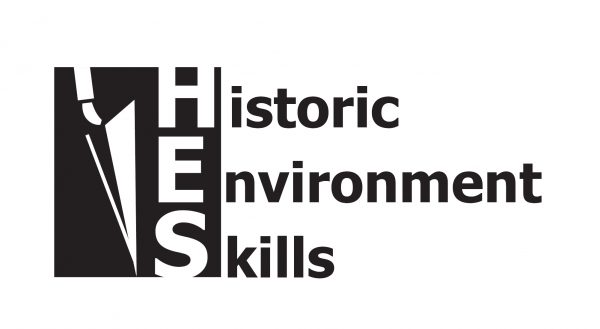In the late autumn of 2020 Historic Environment Skills worked with the delivery team for transept repairs at St Bartholomew’s Church Covenham to provide a couple of trainees with a holistic grounding in building conservation and repair in the historic environment. Here one of the trainees, Fede, tells us about his time with us.
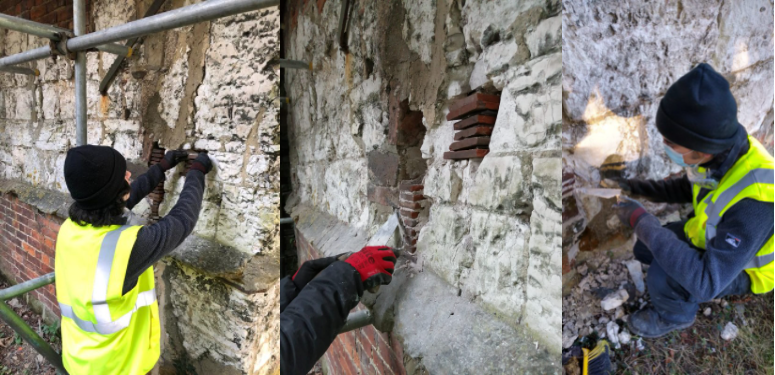
After coursing a Degree in Conservation in Spain, I decided to broaden my scope by studying abroad. I took a master’s in Museums and Heritage Development at Nottingham Trent University. Despite having a strong background in Heritage I am still questioning what role in the heritage sector suits me more, it is a duel between theoretical and practical stuff. Due to the Covid-19 pandemic, I decided to extend my stay in England, soon after I got offered a trainee role at St Bartholomew’s as part of Heritage Environment Skills. A six-week traineeship aiming to undertake repairs of the church. This listed building dated to the late Fourteenth Century, presented in a poor state of conservation, the integrity of which was at risk. During this project I was able to develop important analytical skills, understanding the historic fabric and the construction phases of the building alongside strong practical skills such as pointing, tile repairs or slating.
Measuring St Barts
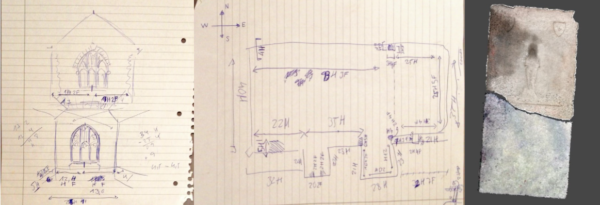
During the first week in search of understanding the characteristics of the building, we put ourselves in the mentality of medieval craftsmen. To measure the church we avoided the use of modern systems such as tape measures and devised a traditional system, this consisted of the use of hands and sticks equivalent to six hands. This system was fast and effective and allowed us to calculate the dimensions of the building or the thickness of the walls. Later we calculated the dimensions of a hand in inches and obtained a rough plan with the dimensions, which were of great help to the technicians.
The broken tombstone
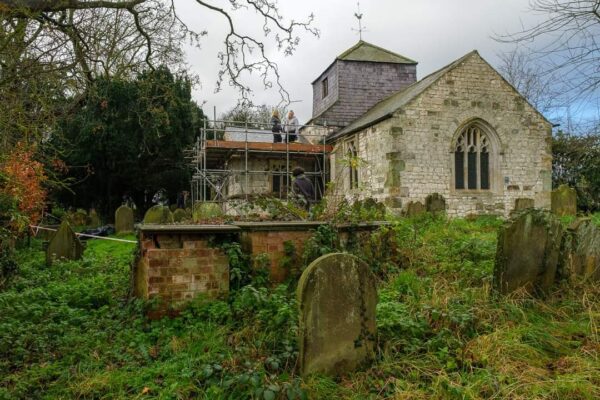
In the South transept, there is a medieval tomb that is missing its original brass, the bottom area is irregular as it has been cracked. At the entrance of the churchyard, there is a big finely dressed stone laid in a corner, its shape and position were quite singular. This led us to measure and start figuring out where it belongs to. After clearing it from ivy, it presented and small indent in one corner. The theory was that this stone belonged to a bigger tombstone which remaining half remains inside the south transept of the church, showing the shape of a former brass inlay. To prove this theory I photographed both fragments and digitised them and try to fit them in as if they were sisters – both stones matched perfectly. The question now is, how did the tomb get damaged? When did this happen? Why was the bottom half was left outside?
Repointing
The bad state of the walls and the addition of cement-based mortars from previous repairs, required intervention. Seeking compatibility with the original fabric and permeability, we prepared a quick lime mortar with sand (1:2), to be laid between the ashlar joints in order to support the integrity and structure of the wall. The process consisted of the insertion of the mortar with the help of a trowel and a pointing trowel, making sure that the mix was put inside the different cavities properly. In certain areas we made use of small fragments of chalk and slate, doing what is called pinning, which strengthens the mortar and provides a better dry out.
Honest Repairs
Following the conservation principles of discernability and respect for the original fabric, we decided to intervene in the big crack and void in the walls using tile repairs, also known as honest repairs. The intervention consists of the insertion of nibbled tiles that follow the shape of the void to fill, keeping a couple of inches joint between each where the lime mortar is laid. While it can sound like a time-consuming process it is ultimately rewarding and beneficial for the building, compared to other interventions such as indents. Some positive assets of these kinds of interventions are the honesty of it; we are not going to camouflage our work with the original blocks of stone and secondly, we keep as much original fabric as possible
My next move
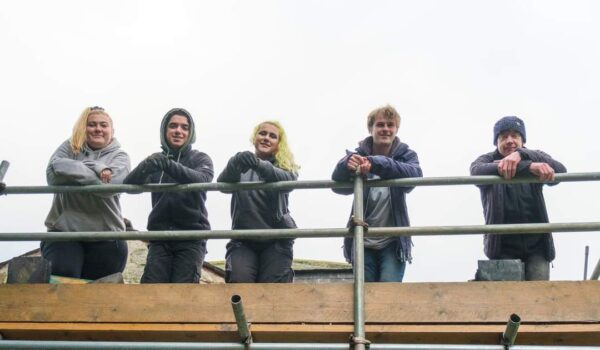
This experience has been life-changing, having the chance to be involved in a holistic project like this, during a lockdown and furthermore abroad it is definitely a privilege. I am really proud of being part of the St Barts team. I have enjoyed a different facet of the conservation sector that I wasn’t used to and at the same time I had the chance to meet wonderful people. What my next step will be, I do not have a clue where or what, but I know it will be about heritage, regardless it is a hard way through I am committed to pursuing my passion.

